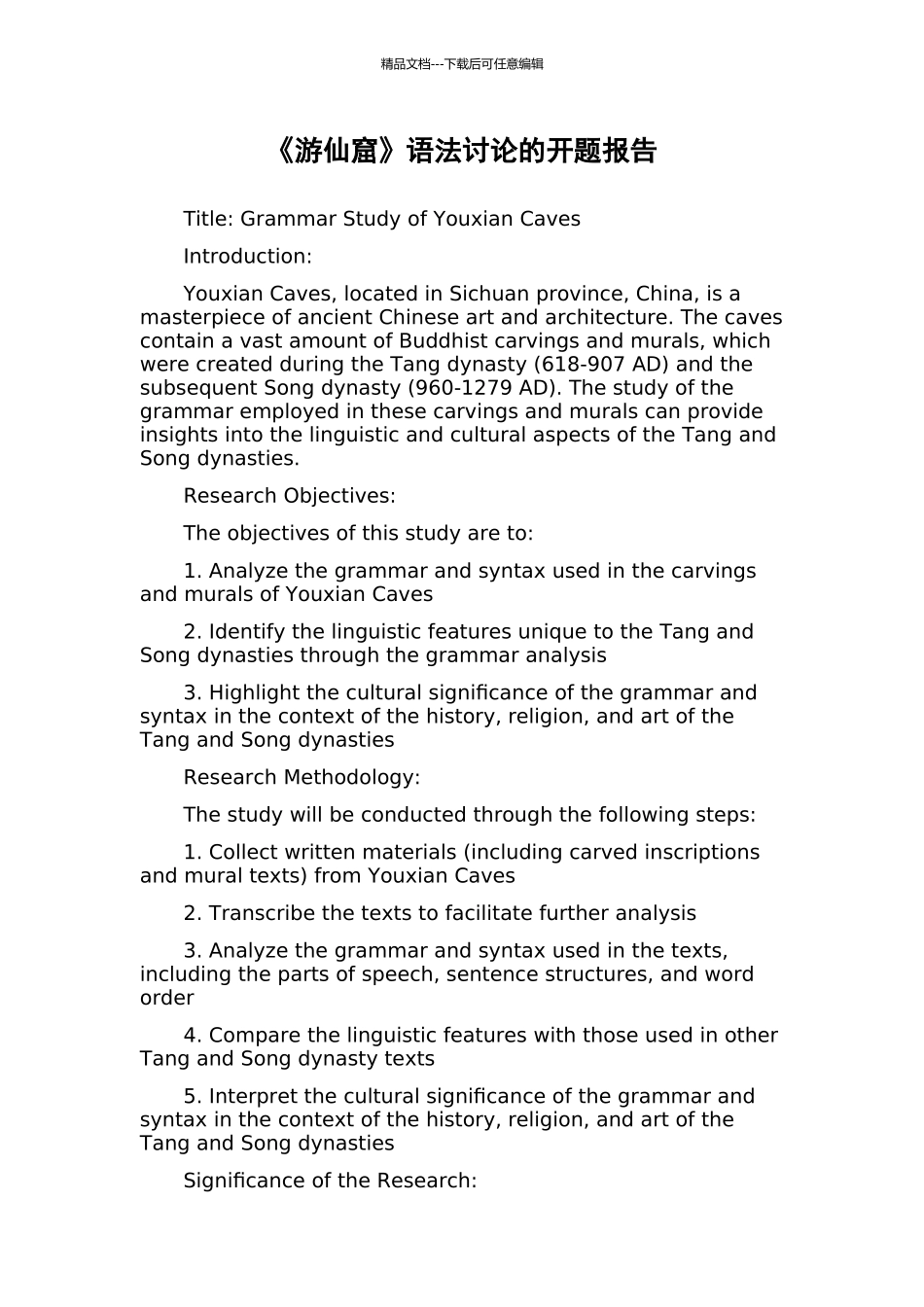精品文档---下载后可任意编辑《游仙窟》语法讨论的开题报告Title: Grammar Study of Youxian CavesIntroduction:Youxian Caves, located in Sichuan province, China, is a masterpiece of ancient Chinese art and architecture. The caves contain a vast amount of Buddhist carvings and murals, which were created during the Tang dynasty (618-907 AD) and the subsequent Song dynasty (960-1279 AD). The study of the grammar employed in these carvings and murals can provide insights into the linguistic and cultural aspects of the Tang and Song dynasties.Research Objectives:The objectives of this study are to:1. Analyze the grammar and syntax used in the carvings and murals of Youxian Caves2. Identify the linguistic features unique to the Tang and Song dynasties through the grammar analysis3. Highlight the cultural significance of the grammar and syntax in the context of the history, religion, and art of the Tang and Song dynastiesResearch Methodology:The study will be conducted through the following steps:1. Collect written materials (including carved inscriptions and mural texts) from Youxian Caves2. Transcribe the texts to facilitate further analysis3. Analyze the grammar and syntax used in the texts, including the parts of speech, sentence structures, and word order4. Compare the linguistic features with those used in other Tang and Song dynasty texts5. Interpret the cultural significance of the grammar and syntax in the context of the history, religion, and art of the Tang and Song dynastiesSignificance of the Research:精品文档---下载后可任意编辑This study can provide valuable insights into the language and culture of the Tang and Song dynasties, particularly in the context of Buddhist art and architecture. The findings can contribute to the field of linguistics and cultural studies, as well as serve as a useful reference for historians, art scholars, and cultural heritage experts.

